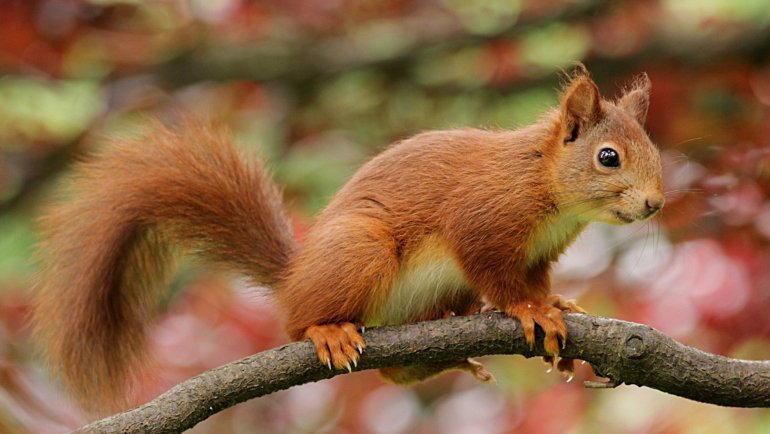Raccoons are known for their intelligence, agility, and adaptability, which have helped them thrive in various habitats and environments. However, one question many people may have about these creatures is whether they can climb trees.
In this article, I will explore whether raccoons can climb trees and take a closer look at their anatomy, behavior, and adaptations that enable them to perform this action.
Can Raccoons Climb Trees? Are They Good Climbers?
Yes, raccoons are excellent climbers and are well-known for their ability to climb trees. Their anatomy and behavior are adapted to allow them to climb efficiently, and they often use this skill to escape predators, find food, and explore their environment.
How High Can Raccoons Climb?
Raccoons have been known to climb as high as 35 to 40 feet (10 to 12 meters), especially when seeking refuge from predators or searching for food.
What Are Raccoon’s Adaptations To Climb Trees?
Raccoons have several adaptations that make them excellent climbers and enable them to navigate surfaces easily. Here are some of their key adaptations:
Sharp, Curved Claws
They have sharp, curved claws that enable them to grip onto tree bark and branches securely. Their claws are retractable, which allows them to climb up and down smoothly without getting caught by any obstacles.
Strong Hind Legs
Raccoons have strong hind legs that allow them to jump and leap from branch to branch and propel themselves up vertical surfaces. Their hind legs are also flexible, which helps them maintain balance and stability when climbing.

Flexible Ankles
They have ankles that are flexible and can rotate almost 180 degrees, which allows them to climb down vertical surfaces headfirst. This adaptation gives them a more comprehensive range of movement and enables them to navigate trees and other structures in various ways.
Gripping Ability
These creatures have a unique adaptation on the soles of their feet called ‘friction ridges’ that allow them to grip onto surfaces tightly. These ridges help raccoons maintain traction and grip branches and other surfaces without slipping.
Why Do Raccoons Climb Trees At Night?
Raccoons are primarily nocturnal animals, which means they are most active at night. Below are additional reasons why these mammals climb trees at night:
- Safety from Predators: Climbing up high into the tree canopy allows raccoons to avoid predators and escape danger if necessary.
- Searching for Food: It allows the animal to access fruits and nuts that may be out of reach on the ground, bird nests, and other food sources.
- Curiosity and Exploration: Raccoons are naturally curious animals and like to explore their environment. Climbing trees allows them to move around more freely and explore new habitats.
- Territory Marking: Raccoons may climb trees while excreting urine or other scent markers to mark their territory.
- Relaxation: Climbing trees also provide a comfortable and secure place for raccoons to rest and sleep during the day.
Do Raccoons Live In Trees?
Yes, raccoons are excellent climbers known to spend more time in trees. They have sharp claws that allow them to easily climb up and down tree trunks and move around on branches.

They use trees to rest during the day, especially in areas with few hiding places on the ground. They may also use tree hollows as dens or nests for raising their young. So, while raccoons can also be found on the ground, trees are part of their natural habitat.
Do Raccoons Sleep In Trees?
Yes, raccoons often sleep in trees, especially during the daytime when they are inactive. When they sleep, they usually find a branch or hollow that provides shelter and protection from the elements and predators.
They may curl up into a ball or lay flat on their side to sleep. These creatures are typically solitary, so they may sleep alone or in small groups, such as a mother and her young. Sleeping in trees also helps them avoid ground-dwelling predators, such as coyotes or foxes, which are less likely to climb trees.
Can Raccoons Climb Walls?
Yes, raccoons can climb on walls. These creatures are skilled climbers and can climb various surfaces if the surface provides enough traction for their sharp claws.
However, the ability to climb walls depends on several factors, such as the texture and height of the wall, the presence of any obstacles, and the animal’s agility. For example, a rough or textured wall may provide better traction for raccoon claws, making it easier for them to climb.
This skill is highly valuable for the raccoons that inhabit urban environments, as they are highly likely to encounter walls when they move through alleyways or climb onto roofs. Therefore, they use the wall climbing ability to navigate through these obstacles.
Can Raccoons Climb Fences?
Yes, raccoons can climb fences, especially if it has a rough or textured surface that provides traction for their claws.
However, some fences may be more difficult for raccoons to climb. For example, a smooth or slippery fence may be more challenging to climb than a fence with a rough or textured surface.
Additionally, the height of the fence may play a role, as a very tall fence may be too tricky for a raccoon to climb.

Do Raccoons Only Come Out At Night?
Raccoons are primarily nocturnal animals, which means they are most active at night and sleep during the day. However, they are also opportunistic animals, and if food sources are available during the daytime, they may adjust their behavior to take advantage of those resources.
Frequently Asked Questions
How Far Can A Raccoon Jump?
On average, a raccoon can jump horizontally up to 3 to 4 feet (0.9 to 1.2 meters) in a single leap. However, some raccoons can jump even farther, up to 8 to 10 feet (2.4 to 3 meters), especially if they have a running start or jump down from a tree branch.
Raccoons can also jump vertically, which can help them access food sources or climb trees. An adult raccoon can typically jump vertically up to 2 to 3 feet (0.6 to 0.9 meters).
Can Raccoons Climb Houses?
Raccoons are skilled climbers capable of climbing various structures, including houses. They are particularly attracted to houses because they provide shelter, warmth, and food sources.
In urban and suburban areas, raccoons have become accustomed to living close to humans and have learned to take advantage of the resources provided by human habitation.
Final Thoughts
Raccoons are skilled climbers and are well-adapted to living in trees as it provides them with several benefits, like access to food sources and a safe place to rest and sleep.
However, it is essential to remember that raccoons are wild animals and should be treated cautiously and respectfully. While they are generally not aggressive towards humans, they can become defensive and even bite if threatened or cornered.





